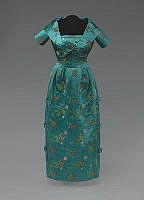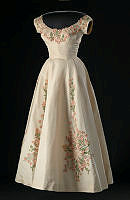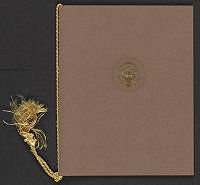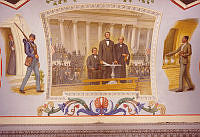

Share
You Might Also Like
-
 Collection
CollectionThe Decatur House Slave Quarters
In 1821-1822, Susan Decatur requested the construction of a service wing. The first floor featured a large kitchen, dining room, and laundry; while the second floor contained four rooms designated as living quarters. By 1827, the service wing was being used as an urban slave quarters. Henry Clay brought enslaved individuals to Decatur House, starting a trend that was solidified by
-
 Collection
Collection'A Tempest in a Teapot'
First Lady Lou Hoover's invitation to Jessie L. DePriest to a White House tea party in 1929 created a storm of protest and indignation. This traditional act of hospitality toward the wife of the first black man elected to Congress in the twentieth century created a political crisis for the president and first lady. This collection explores the "tempest" from the
-
 Collection
CollectionThe Historic Stephen Decatur House
In 1816, Commodore Stephen Decatur, Jr. and his wife Susan moved to the nascent capital city of Washington, D.C. With the prize money he received from his naval feats, Decatur purchased the entire city block on the northwest corner of today’s Lafayette Square. The Decaturs commissioned Benjamin Henry Latrobe, one of America’s first professional architects, to design and buil
-
Page
David M. Rubenstein
David M. Rubenstein is co-founder and co-chairman of The Carlyle Group, one of the world’s largest and most successful private investment firms. Established in 1987, Carlyle now manages $369 billion from twenty-nine offices around the world. Mr. Rubenstein is chairman of the boards of the John F. Kennedy Center for the Performing Arts, the Council on Foreign Relations, the National Gallery of
-
Page
Lonnie G. Bunch III
Lonnie G. Bunch III is the fourteenth secretary of the Smithsonian; he assumed his position June 16, 2019. As secretary, he oversees twenty-one museums, twenty-one libraries, the National Zoo, numerous research centers, and several education units and centers. Two new museums—the National Museum of the American Latino and the Smithsonian American Women’s History Museum—are in development. Bunch was the foundi
-
Page
Slavery and Freedom in the White House Collection
The White House Collection and the Atlantic World Jennifer L. Anderson, Mahogany: The Costs of Luxury in Early America (Cambridge, MA: Harvard University Press, 2012). Vernon C. Stoneman, John and Thomas Seymour, Cabinetmakers in Boston, 1794-1816 (Boston, MA: Special Publications, 1959). Sarah Fling, “Sugar, Slavery, and the Washington China,” White House Historical Association, https://www.whitehousehistory.org/sugar-slavery-and-the-washington-china.Hannah Boettcher and Ronald W. F
-
-
Page
1862 Emancipation Petitions
The Center for Digital Research in the Humanities at the University of Nebraska-Lincoln “Civil War Washington” website has posted the 1862 Emancipation Petitions, providing widespread access to these primary documents. To meet the requirements of the D.C. Compensated Emancipation Act of 1862, slave owners filed a petition with the District government that stated their loyalty to the Union, listed the number and
-
Page
19th Century White House Staff
For most of the 19th century, the structure of the White House staff remained generally the same. At the top was the steward, a federal employee who was bonded; the Congress created this position to safeguard the silver and furnishings in the house. The steward was on the government payroll. He functioned as the manager of the house. The job
-
Page
Colin Powell
On August 10, 1989, President Bush announced his appointment of General Colin Powell as Chairman of the Joint Chiefs of Staff. Powell became the architect of Operation Desert Shield, a staging operation that moved American and international forces and materials to the Middle East to launch Operation Desert Storm. As President Bush’s trusted advisor, Powell helped shape a global alliance that ex
-
Page
E. Frederic Morrow at the White House
E. Frederic Morrow was the first African American to serve in an executive position on a president’s staff at the White House. Morrow was a minister’s son who had graduated from Bowdoin College and was employed by the National Urban League and the NAACP before entering Army service during World War II. After the war, he obtained a law
-
Page
Marian Anderson Performs at the White House
One of the most memorable performances in White House history was Marian Anderson’s rendition of Schubert’s "Ave Maria" as the culmination of a gala "Evening of American Music" presented by Franklin and Eleanor Roosevelt in 1939. The entertainment was planned for a state visit by King George VI and Queen Elizabeth of England. Anderson’s powerful voice soared that evenin
-

-

-

-

-

-

-

-

-



